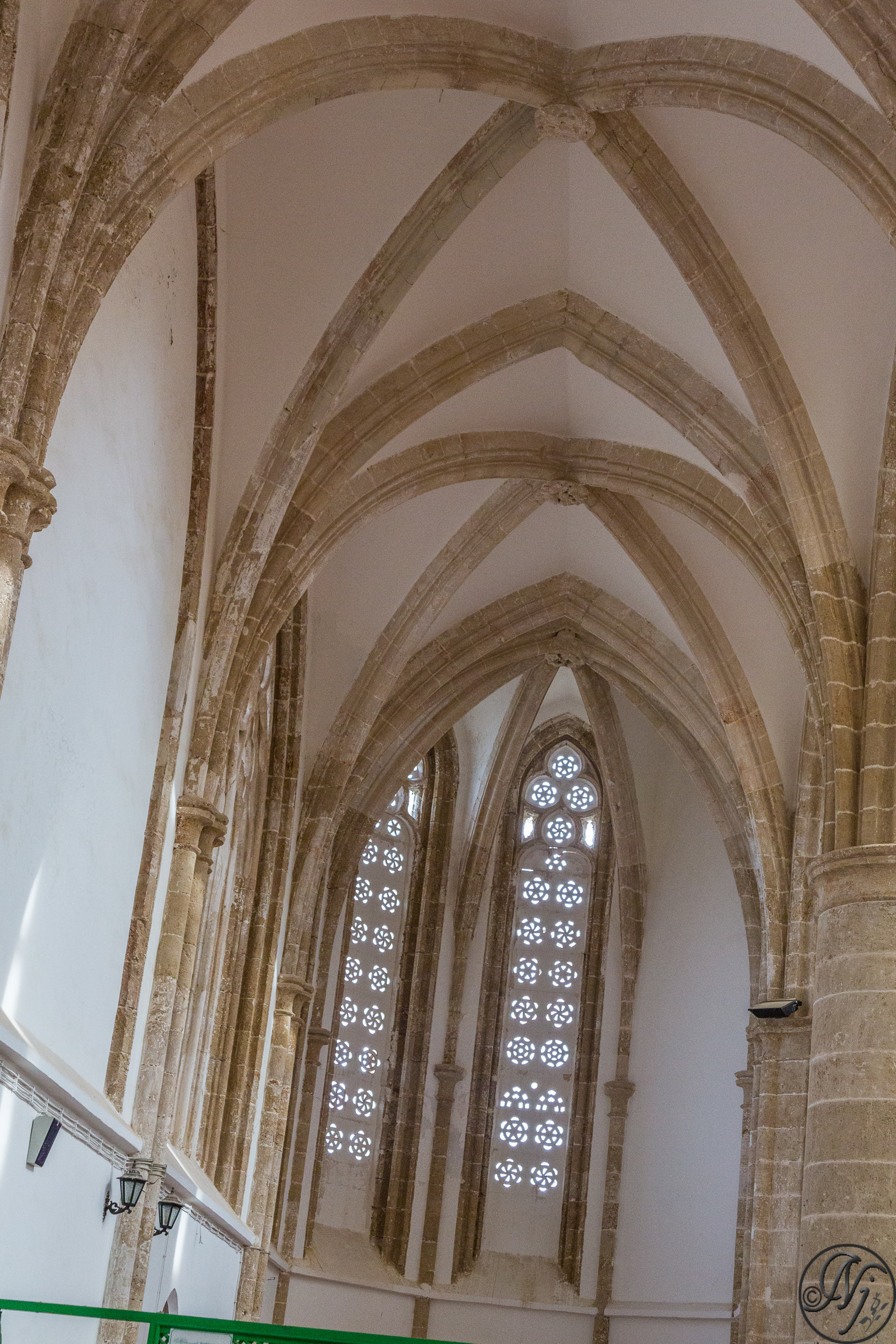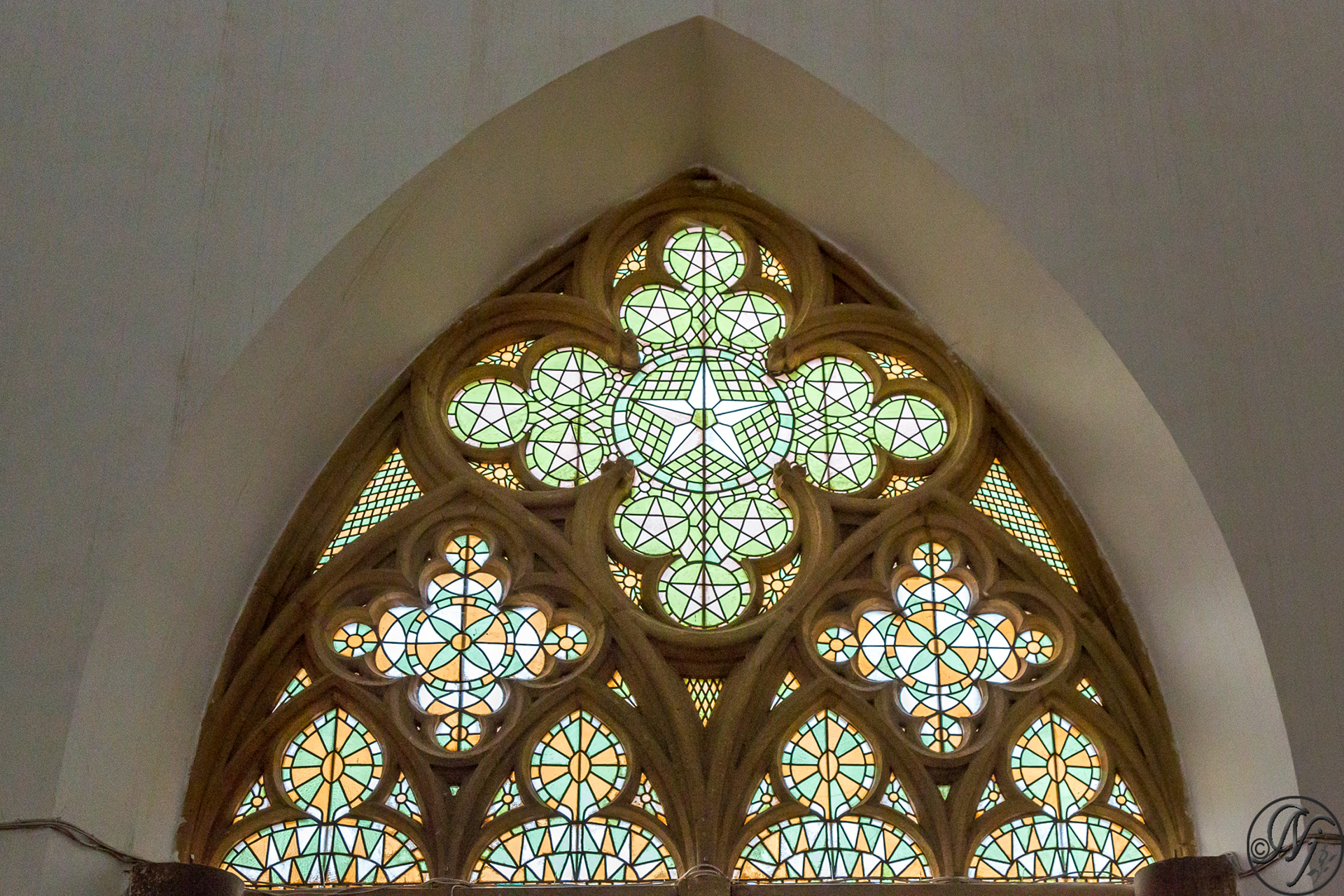









The French Lusignan dynasty ruled as Kings of Cyprus from 1192 to 1489 and brought with them the latest French taste in architecture, notably developments in Gothic architecture. Inscription dated 1311 on the south side of St. Nicholas Cathedral, Famagusta, recording the progress of the construction. The cathedral was constructed from 1298 to 1312 and was consecrated in 1328. A unique inscription on a buttress beside the south door records the progress of construction in 1311. "After an unfortunate episode when the current bishop embezzled the restoration fund", Bishop Guy of Ibelin bequeathed 20,000 bezants for its construction. The Lusignans would be crowned as Kings of Cyprus in the St. Sophia Cathedral (now Selimiye Mosque) in Nicosia and then crowned as Kings of Jerusalem in the St Nicholas Cathedral in Famagusta. The building is built in Rayonnant Gothic style, quite rare outside France, though "mediated through buildings in the Rhineland". The historic tie between France and Cyprus is evidenced by its parallels to French archetypes such as Reims Cathedral. Indeed, so strong is the resemblance, that the building has been dubbed "The Reims of Cyprus"; it was built with three doors, twin towers over the aisles and a flat roof, typical of Crusader architecture. St. Nicholas Cathedral, Famagusta, Cyprus, Loggia Bembo, detail of the entrance, circa 1480s. The heraldic devices of the Bembo family are on the abaci of the pillars and visible on the end of the marble seat. Sometime after 1480, a meeting chamber, known as the Loggia Bembo, was added to the south-west corner of the cathedral. Notable for its elaborately moulded entrance with slender pillars in marble, it is in an architectural style that departs considerably from that of the cathedral proper. The association with the Bembo family, some of whom held prominent positions in Cyprus, is shown by their heraldic devices on the building. To enhance the Loggia, late antique fragments in marble, probably brought from Salamis, were placed as seats each side of the entrance.









